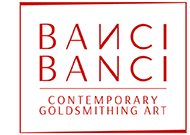Umberto Curi è una delle persone che ha ispirato con il suo pensiero filosofico, il lavoro di Daniela e Marzia Banci ed ha anche contribuito ad arricchire di contenuti la mostra “La tradizione nella modernità“
Umberto Curi è Professore Emerito di Storia della filosofia all’Università degli Studi di Padova e quella che segue è l’estratto di una conversazione con Daniela e Marzia Banci.
Buona lettura!
Come entra la filosofia nella vita di Umberto Curi
La filosofia – fin dalle sue origini – non è una “disciplina”, ma è piuttosto una forma di vita.
Il pensiero filosofico di Platone è presente in ogni tuo libro, riflette anche il tuo pensiero?
Platone è certamente l’autore col quale avverto più spesso la fecondità di un dialogo e di un confronto. Mai però nel senso di una totale immedesimazione. Perché è proprio Platone che ci insegna a rapportarci col pensiero altrui sempre in forme fortemente critiche. Il polemos – il conflitto – è dunque anche la forma del mio incontro con Platone.
Platone parla dell’arte come della “divina mania”, ci spieghi questa interpretazione?
Il discorso sarebbe lungo.
Ridotto all’osso, per Platone l’arte ci mette in contatto con una dimensione che procede al di là dei limiti della sensibilità. Importante è sottolineare che, secondo il filosofo, la bellezza ricercata dall’arte svolge una funzione analoga all’eros, anch’esso proiettato verso l’attingimento di una realtà più compiuta.
Hegel considera l’arte nella ” Filosofia dello Spirito” e la pone a pari livello con la Religione e la Filosofia: qual è la tua idea in proposito?
Per Hegel si è parlato (non del tutto a proposito) di “morte dell’arte”, proprio perché nel divenire dello Spirito assoluto l’arte è destinata ad essere “superata” dalla religione, la quale a sua volta sarà superata dalla filosofia. Ma questo è un Hegel “scolastico”, mentre le riflessioni hegeliane non si lasciano imprigionare da aride formulette.
È appena uscito un nuovo manuale di filosofia curato da te. Quali sono i suoi contenuti e a chi si rivolge?
Si intitola “IL coraggio di pensare” (Loescher, 5 tomi, 3500 pagine circa) e riprende nel titolo il motto di Orazio citato da Kant: “Sapere aude”, abbi il coraggio di conoscere.
È destinato agli allievi dei Licei e aspira a costituirsi come radicale innovazione, rispetto ad una manualistica filosofica complessivamente deludente.
Con i miei collaboratori, abbiamo cercato di “insegnare a pensare”, senza accontentarci di “insegnare pensieri”.
Sono ansioso di verificare se e fino a che punto questa impostazione indubbiamente originale incontrerà il favore dei colleghi della scuola secondaria e l’apprezzamento degli studenti.
Quale potrebbe essere la forma di un progetto, valido oggi, per diffondere il pensiero filosofico?
Il manuale a cui mi sono riferito nella precedente risposta avrebbe l’ambizione di corrispondere al progetto di diffondere il pensiero filosofico.
Non dovremmo dimenticare che l’Italia è l’unico paese al mondo nel quale è previsto un triennio di studi obbligatori di filosofia nella scuola secondaria.
In altri paesi, non è prevista la filosofia fra le “materie” di insegnamento, o essa compare solo come disciplina facoltativa (Inghilterra), ovvero come trattazione per problemi, limitata all’ultimo anno (Francia).
Il problema è che a mio giudizio mancano finora strumenti didattici adeguati al ruolo che viene riconosciuto alla filosofia nelle scuole.
Sarei per lo meno inelegante se dicessi che il manuale da me coordinato intende colmare questa lacuna.
Quali sono i punti di contatto tra l’oreficeria e la filosofia?
Direi che l’essenziale per entrambe è la ricerca.
Non sono un esperto di oreficeria. Ma ammirando i gioielli delle Sorelle Banci colgo in essi non semplicemente l’esibizione di “cose” belle, ma la tensione a scoprire la bellezza, e a “produrla”, anche là dove non ci si aspetterebbe di trovarla.
E poi vi è un altro – sorprendente – punto di contatto.
I gioielli sono fatti per essere indossati. Non è sufficiente osservarli. Diventano gioielli sono quando me li metto addosso. Qualcosa di simile accade per la filosofia. Essa non coincide con lo studio di un autore o la mera ripetizione di qualche formula. Me la devo mettere addosso, perché sia davvero filosofia. Deve diventare appunto parte di me. Come indosso un gioiello, affinché il metallo prezioso diventi una gioia, così devo fare della filosofia un modo di vivere, per esaltarne la peculiarità.



